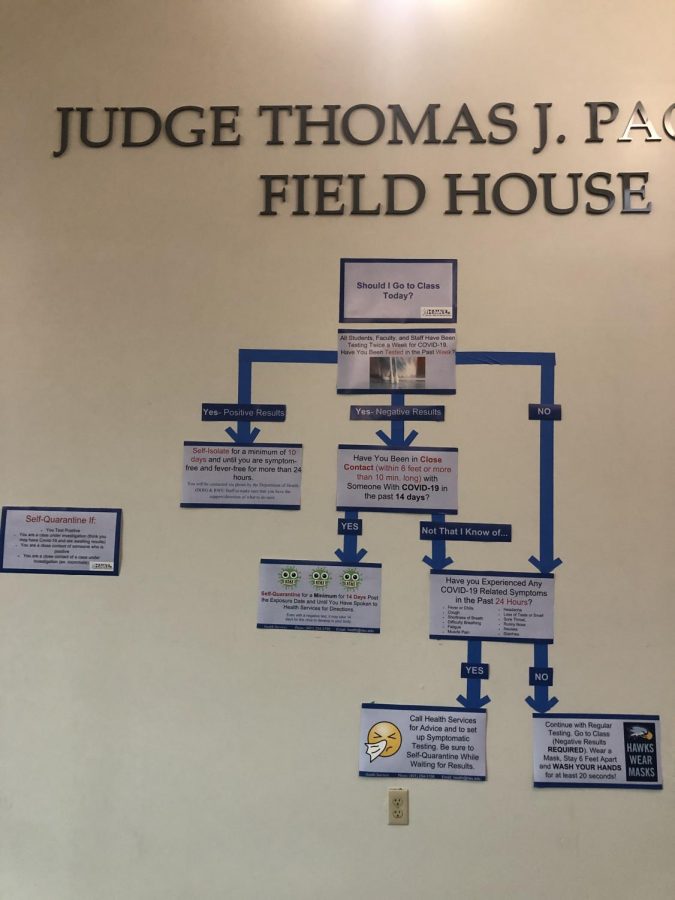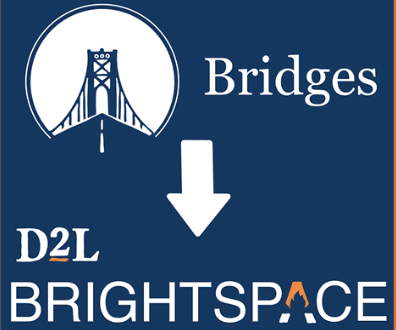COVID-19 testing costs prompt proposal to eliminate spring student activity fee
This self-screening chart, hung outside of the testing area in the Rec Center, helps students determine whether they should attend class based on their university testing frequency and any possible symptoms they might be experiencing.
As the university makes plans in preparations for a spring semester opening, discussions regarding how to reduce COVID-19 testing costs are taking place. Vice President of Student Life John King announced a proposal this week that would eliminate the student activity fee for spring semester, in efforts to lower the testing cost each student would receive.
For next semester, King estimated the additional testing cost per student to be between $250-275, a charge that students would see on their university bill. The university wants to reduce that price even further, which is where the recommendation to eliminate the student activity fee comes in. If the $165 spring semester student activity fee is removed and instead put toward students’ testing fees, they will only see a testing cost of between $85-110 for the entire semester.
“When you consider that one COVID-19 test out of pocket costs more than $85-110 and that students will get approximately 32 COVID-19 tests over the course of the semester, that’s quite a bargain in terms of testing costs,” King said.
King presented this proposal at the Nov. 9 Student Senate meeting, to see if the Senate would consider endorsing the fee elimination in a one-semester approach. The idea of removing this fee might lead some to believe that club and org budgets would be at risk of reduction, but King emphasized the goal is to protect current budgets that are in place.
Due to COVID-19 implications, King said there has been dramatic underspending of fall budget allocations across university clubs and orgs. He said around $600,000 was rolled into the Student Senate reserve account from last year, contributing to the highest balance that account has ever had, with its current balance standing at more than $2 million.
If the activity fee is removed, King said money from the reserve account can be used to fill any budget needs based on spending rate in the spring semester, but added that if the rate is similar to what it is now, there probably won’t be any need. If there is, they will do what they can to fill the void.
For the 2020-2021 academic year, the university will end up spending around $4.75 million on testing, according to King. It costs $750 per student to test students twice a week for the entire semester, which is what the university has been practicing this fall for those taking in-person classes and students who live on campus. Funding for testing was a significant priority for the university this semester in order to ensure reopening, and King said difficult decisions had to be made, such as leaving positions like director of health education and director of spiritual life vacant for the remainder of the academic year. At no point did the university want to tack on that full testing cost for students, so these were just some of the budgeting measures implemented to make sure the cost to students remained low.
Assistant Dean of Students and Director of Student Programs, Leadership and Orientation Carol Sacchetti believes the fee elimination proposal is a good idea and said she doesn’t think any organization or club will suffer or have to change how they do business in regards to budgeting.
“I think it’s a win-win. It’s very doable… This sees for your peers what could be some additional funds on their bills and I think we need to look at that,” Sacchetti said in the Student Senate meeting. “I don’t think I would be here if I didn’t think this is something worthwhile that I am considering.”






